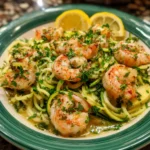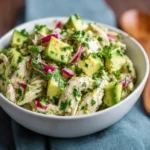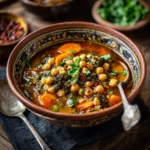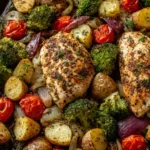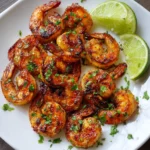Balsamic Glazed Chicken: A Flavorful, Elegant Dish for Any Occasion
Balsamic glazed chicken is a culinary masterpiece that combines the tender juiciness of chicken with the rich, tangy sweetness of balsamic vinegar. Loved by home cooks and gourmet chefs alike, this dish strikes the perfect balance between simplicity and sophistication. Whether you’re preparing a weeknight dinner or hosting a special gathering, balsamic glazed chicken delivers bold flavor with minimal effort. Its glossy, deep-brown glaze enhances both the visual appeal and taste, making it a standout dish on any table.
The History of Balsamic Glazed Chicken
While chicken has been a staple protein in cuisines around the world for centuries, the concept of balsamic glazing emerged more recently as part of modern fusion cooking. Traditional balsamic vinegar originates from Modena, Italy, where it has been aged for decades in wooden barrels to develop its complex, syrupy consistency and balanced sweet-tart flavor. In the 20th century, Italian-American chefs began experimenting with reducing balsamic vinegar into a thick, glossy glaze, often pairing it with meats like chicken, pork, and beef.
The popularity of balsamic glazed chicken surged in the early 2000s, particularly in North America, thanks to its appearance on restaurant menus and cooking shows. The dish exemplifies the trend toward gourmet home cooking—using high-quality ingredients to create restaurant-style meals without requiring advanced techniques. Today, balsamic glazed chicken is considered a classic in modern Western cuisine, admired for its elegant presentation and depth of flavor.
Ingredients Breakdown: What Makes This Dish Shine
The magic of balsamic glazed chicken lies in its carefully balanced ingredients. Each component contributes to the final harmony of flavors and textures:
- Chicken breasts or thighs: Boneless, skin-on chicken breasts are most commonly used for their lean texture and even cooking. However, boneless thighs offer richer flavor and stay juicier during cooking.
- Balsamic vinegar: The star ingredient. High-quality balsamic vinegar provides a sweet-tart base that caramelizes beautifully when reduced. Avoid cheap, overly acidic versions; opt for authentic Modena or aged balsamic for best results.
- Olive oil: Used for searing the chicken and adding richness. Extra virgin olive oil enhances the overall Mediterranean profile.
- Garlic: Freshly minced garlic adds aromatic depth and complements the acidity of the balsamic.
- Honey or brown sugar: These sweeteners balance the tartness of the vinegar and help form a sticky, lustrous glaze.
- Dijon mustard: Adds complexity and emulsifies the sauce, giving it a smooth, velvety texture.
- Fresh herbs: Rosemary, thyme, or oregano bring earthy notes that elevate the dish. Parsley is often used as a fresh garnish.
- Salt and black pepper: Essential seasonings that enhance all other flavors.
- Chicken broth or stock: Adds moisture and depth to the sauce while deglazing the pan.
Step-by-Step Recipe: How to Make Perfect Balsamic Glazed Chicken
Follow these detailed steps to achieve tender, juicy chicken coated in a glossy, restaurant-quality balsamic glaze.
- Prep the Chicken: Start with 4 boneless, skin-on chicken breasts (about 6 oz each). Pat them dry with paper towels to ensure proper searing. Season both sides generously with salt and freshly ground black pepper.
- Sear the Chicken: Heat 2 tablespoons of extra virgin olive oil in a large oven-safe skillet (like cast iron or stainless steel) over medium-high heat. Once hot, place the chicken breasts skin-side down. Sear for 5–6 minutes until golden brown and crispy. Flip and sear the other side for 3 minutes. Remove chicken and set aside.
- Build the Sauce: In the same skillet, reduce the heat to medium. Add 1 tablespoon of olive oil if needed, then stir in 4 cloves of minced garlic. Cook for 30 seconds until fragrant (do not burn). Pour in 1 cup of high-quality balsamic vinegar, ¼ cup of chicken broth, 2 tablespoons of honey, 1 tablespoon of Dijon mustard, and 1 teaspoon of dried thyme (or 3 sprigs fresh thyme).
- Simmer and Reduce: Bring the mixture to a simmer, scraping up any browned bits from the bottom of the pan (this adds incredible flavor). Let the sauce cook for 8–10 minutes until it reduces by about one-third and begins to thicken slightly.
- Glaze the Chicken: Return the chicken to the skillet, skin-side up. Spoon the warm sauce over the top. Transfer the skillet to a preheated oven at 375°F (190°C) and bake for 18–22 minutes, or until the internal temperature reaches 165°F (74°C).
- Final Glaze: Remove the skillet from the oven. Transfer the chicken to a plate and tent with foil. Increase the oven temperature to broil (high setting). Broil the sauce in the skillet for 3–5 minutes, stirring occasionally, until it becomes thick, syrupy, and coats the back of a spoon. Alternatively, reduce further on the stovetop over medium heat.
- Serve: Drizzle the thickened glaze over the chicken. Garnish with chopped fresh parsley or rosemary. Serve immediately.
Tips for Success
- Use skin-on chicken: The skin protects the meat during searing and helps retain moisture. It also crisps up beautifully under the broiler.
- Don’t skip the sear: Searing locks in juices and builds a flavorful fond in the pan, which enriches the sauce.
- Reduce the sauce properly: The glaze should be thick enough to coat the back of a spoon but still pourable. Over-reduction can make it too sticky.
- Check internal temperature: Use a meat thermometer to avoid overcooking. Chicken should reach exactly 165°F (74°C).
- Rest before serving: Let the chicken rest for 5 minutes after baking to allow juices to redistribute.
- Baste during baking: For extra flavor, spoon the sauce over the chicken halfway through baking.
Variations and Customizations
Balsamic glazed chicken is incredibly versatile. Here are some popular variations to suit different tastes and dietary needs:
- Low-Sugar Version: Replace honey with a sugar-free substitute like monk fruit syrup or reduce the amount significantly. You can also use naturally sweet vegetables like roasted carrots in the pan to add subtle sweetness.
- Grilled Balsamic Chicken: Marinate chicken in balsamic, olive oil, garlic, and herbs for 2–4 hours, then grill over medium heat. Brush with additional glaze during the last few minutes.
- Slow Cooker Method: Sear chicken first, then transfer to a slow cooker with the sauce ingredients. Cook on low for 4–6 hours. Thicken the sauce on the stovetop afterward.
- Creamy Balsamic Chicken: After reducing the glaze, stir in ¼ cup of heavy cream or coconut milk for a luxurious, silky sauce.
- With Vegetables: Add sliced onions, mushrooms, cherry tomatoes, or bell peppers to the skillet before baking for a complete one-pan meal.
- Asian Fusion Twist: Add 1 tablespoon of soy sauce, 1 teaspoon of ginger, and a splash of sesame oil to the glaze for an umami-rich variation.
- Stovetop-Only Version: If you don’t have an oven-safe pan, finish cooking the chicken entirely on the stovetop over medium-low heat, covered, for 15–20 minutes, then glaze.
Health Considerations and Nutritional Value
Balsamic glazed chicken can be a nutritious addition to a balanced diet when prepared mindfully. Here’s a breakdown of its health aspects:
- Protein-Rich: Chicken is an excellent source of lean protein, essential for muscle repair, immune function, and satiety.
- Heart-Healthy Fats: Olive oil contains monounsaturated fats and antioxidants that support cardiovascular health.
- Balsamic Benefits: Real balsamic vinegar may help regulate blood sugar and contains polyphenols with antioxidant properties.
- Watch the Sugar: Traditional recipes use honey or brown sugar. To reduce added sugars, use less sweetener or opt for natural alternatives.
- Sodium Control: Use low-sodium chicken broth and limit added salt to keep sodium levels in check.
Nutritional Estimate (per serving, 1 chicken breast with glaze):
Calories: ~350 | Protein: 38g | Fat: 14g (Saturated: 3g) | Carbohydrates: 18g | Fiber: 0.5g | Sugar: 14g | Sodium: 450mg
This dish fits well within Mediterranean, heart-healthy, and high-protein diets. Pair it with quinoa, brown rice, or a fresh green salad for a complete, wholesome meal.
Ingredients
- 4 boneless, skin-on chicken breasts (about 6 oz each)
- Salt and freshly ground black pepper (to taste)
- 3 tablespoons extra virgin olive oil (divided)
- 4 cloves garlic, minced
- 1 cup high-quality balsamic vinegar
- ¼ cup low-sodium chicken broth
- 2 tablespoons honey (or maple syrup for vegan option)
- 1 tablespoon Dijon mustard
- 1 teaspoon dried thyme (or 3 sprigs fresh thyme)
- Optional: 1 tablespoon chopped fresh rosemary or oregano
- Chopped fresh parsley (for garnish)
Directions
- Preheat oven to 375°F (190°C). Pat chicken dry and season with salt and pepper.
- Heat 2 tablespoons olive oil in an oven-safe skillet over medium-high heat. Sear chicken skin-side down for 5–6 minutes until golden. Flip and sear opposite side for 3 minutes. Remove and set aside.
- Reduce heat to medium. Add remaining 1 tablespoon oil if needed. Sauté garlic for 30 seconds until fragrant.
- Pour in balsamic vinegar, chicken broth, honey, Dijon mustard, thyme, and optional herbs. Stir and bring to a simmer, scraping up browned bits. Simmer 8–10 minutes until slightly reduced.
- Return chicken to skillet, skin-side up. Spoon sauce over tops. Transfer skillet to oven and bake for 18–22 minutes, until internal temperature reaches 165°F.
- Remove chicken and tent with foil. Increase oven to broil. Broil sauce 3–5 minutes until thick and glossy (or reduce further on stovetop).
- Drizzle glaze over chicken. Garnish with parsley and serve warm.
FAQ
Can I use boneless, skinless chicken?
Yes, but skinless chicken is more prone to drying out. Reduce cooking time and consider pounding to even thickness. Baste frequently to retain moisture.
Can I make this ahead of time?
Yes! Cook the chicken and store it with the sauce separately in the fridge for up to 3 days. Reheat gently in a skillet and glaze before serving.
Is balsamic vinegar healthy?
High-quality balsamic vinegar contains antioxidants and may support digestion and blood sugar control. However, check labels—some commercial brands contain added sugars and preservatives.
Can I freeze balsamic glazed chicken?
Yes, though texture may change slightly. Freeze in an airtight container for up to 3 months. Thaw overnight in the fridge and reheat gently.
What sides go well with balsamic glazed chicken?
Excellent pairings include garlic mashed potatoes, roasted vegetables, wild rice, quinoa, arugula salad with shaved Parmesan, or crusty bread to soak up the sauce.
Why is my glaze too thin?
The sauce needs sufficient reduction. Simmer longer until it coats the back of a spoon. Cool slightly—it will thicken more as it cools.
Can I use chicken thighs?
Absolutely! Boneless, skin-on thighs work wonderfully and offer a richer, more succulent result. Adjust baking time to 25–30 minutes.
Summary
Balsamic glazed chicken is a deceptively simple yet deeply flavorful dish that transforms everyday ingredients into a gourmet experience. With its tender meat and luscious, tangy-sweet glaze, it’s perfect for both casual dinners and elegant entertaining.


